
Volvo XC60 Estate (2008-2017) review
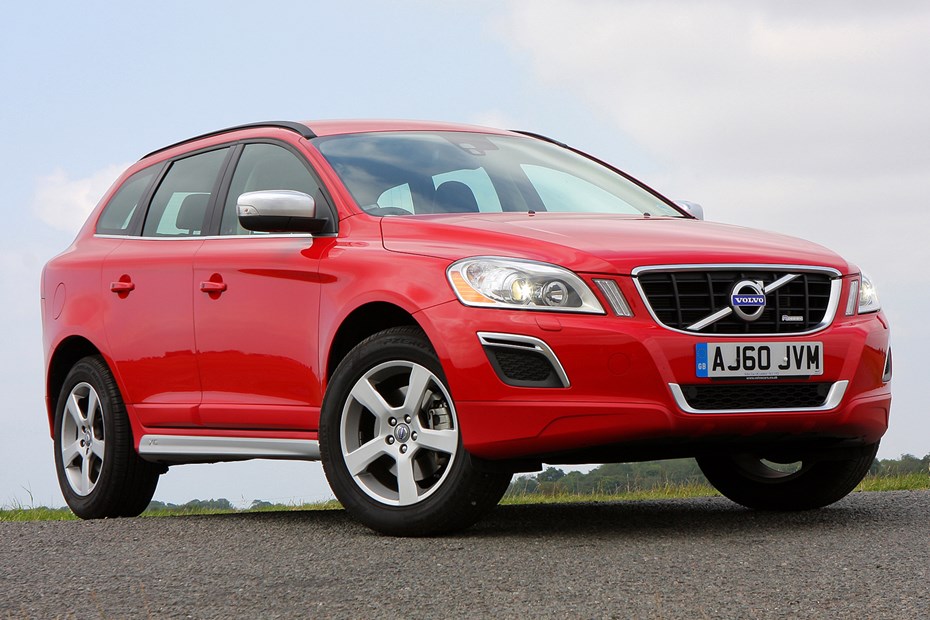
At a glance
| Price new | £24,040 - £42,860 |
|---|---|
| Used prices | £1,623 - £17,310 |
| Road tax cost | £35 - £760 |
| Insurance group | 25 - 37 |
Get an insurance quote with

|
|
| Fuel economy | Not tested to latest standards |
| Range | 370 - 955 miles |
| Number of doors | 5 |
| View full specs for a specific version | |
Available fuel types
Petrol
Diesel
Pros & cons
- Comfortable and refined on the move
- Cabin still feels modern
- High-levels of standard safety kit
- Optional auto gearbox can be hesitant
- Steering lacks feel
- Diesel engines on the noisy side
Volvo XC60 (08-17) rivals
Overview
When shopping for a used family SUV the Volvo XC60 is hard to beat. Expensive when launched, as a second hand buy it has aged well, and represents excellent value. One of the first of the breed of softer, 4x4-inspired but less boxy SUVs that now dominate Britain’s roads, it offers a blend of Volvo’s safety and family-focused design and (on AWD models) Land Rover-style off-road hardware.
It looks great and has aged well. Lacking the boxiness of a Freelander, or the slightly odd proportions of the BMW X3, its key rivals, it stands out from key rivals thanks to Volvo’s strong design language.
Used buyers might be tempted by cheaper, older XC90s when browsing cars for sale, but the XC60 is designed to be equally family-friendly if you don’t need seven-seater space. It’s less bulky and wallowy, and on the road it doesn’t handle like an off-roader. The Four-C Active suspension option provides good body control for sportier driving styles, while the ride quality is excellent on most versions, making it a superb long distance machine.
Volvo XC60 Mk1 (2008-2017) buying guide
The XC60 was the safest car Volvo had ever made when released and all models get City Safety – almost a decade before Euro NCAP ensured most cars carry such tech. There are four engines to choose from with power from 163hp to 306hp, the best of which is the original punchy D5 diesel – if you don’t need to venture into ULEZ or clean air zones. D4 can be a 2.0-litre five-cylinder, 2.4-litre five-cylinder with AWD, or 2.0-litre four-cylinder so check the specs for the year and trim when looking at classified ads.
You’ll want models introduced after April 2015 if you want a ULEZ-compliant diesel – the 2.4-litre five-cylinder was updated to meet Euro 6, but check the specific car you are considering on the TfL website first, as it’s not always obvious (Volvo did not use AdBlue to reduce NOx with the 2.4). If want an automatic car, the XC60’s hesitant gearbox feels a bit less satisfying to drive than the likes of the BMW X3 or Audi Q5.
Despite the XC (Cross Country) brand, not all XC60s have 4x4. Look for high-power engines and ‘AWD’ badges if you want a surprisingly capable family off-roader.
Volvo XC60 Mk1 known faults and common problems
With some cutting edge technology, and a generally new genre for Volvo (with only the XC90 providing feedback for SUV-buyer’s habits and treatment of the cars) the XC60 has had a fair number of recalls, but is otherwise a reliable and well-made car. It’s unlikely that someone’s going to pop up on Facebook after sharing a pic of your new car, and tell you that all XC60s suffer some scary-sounding problem in the way they might for the Volvo C30. Or the related Land Rover Freelander 2.
Even so, neglect, age and mileage means any second hand Volvo XC60 Mk1 should be checked carefully before purchase. As well as looking at the MOT history online, here are the main areas of concern when buying a used XC60.
1. 2.0 diesel – VEA from 2014 (D3, D4)
The 2.0-litre diesel VEA (Volvo Engine Architecture) introduced in 2014 has been subject to a couple of recalls, even if they have been carried out it highlights the challenges of introducing a new engine family. High oil consumption is a problem with pre-2016 models (engine number prior to 1501327) that can require new pistons and rings to rectify.
EGR valves can leak coolant, causing running problems, overheating and ultimately head gasket failure if neglected.
The XC60 D3 and D4 models with this engine are ULEZ compliant.
2. 2.4 diesel – D3, D4, D5, 2.4D
The five-cylinder diesel is used in the XC60 from introduction right up to the second-generation model. It’s a robust engine, with few problems reported except in cases of serious neglect. The timing belt and tensioners should be changed at 108,000 miles or 10 years, whichever comes first, and the auxilliary belt should be changed every five years or 54,000 miles.
With higher mileages and neglect oil leaks may indicate imminent turbo failure, and problems with the DPF and EGR valve are common as the cars get older.
3. Petrol engines – 2.0-litre four-cylinder T5 (imports may have T6 with 306hp)
While the badge says T5, the engine has little in common with the fast Volvo estate that lent its BTCC motorsports halo to the brand. Most petrol XC60s have a variant of this Ford-designed engine, though petrol XC60s in the UK are very rare. It uses a timing chain, and is relatively easy to work on.
Turbo failure, misfires due to coil pack or sensor failure, and non-Volvo specific issues of engine wear and age are your main concerns.
4. Six-cylinder engine – 3.0-litre T6
Volvo’s turbocharged transverse six-cylinder engine is a packaging marvel – and the engineering is good too. Watch for wear on the pulleys for AC and power steering, as the complex READ drive (rear end accessory drive) system can be damaged. Access for maintenance is tight, so it’s a good thing these are reliable.
Oil leaks from the READ and cam cover should be attended to, and a hissing noise may indicate that the PCV system needs attention, either for a torn diaphragm or degraded hoses. Water pump failure is common due to the shared pulley design (the alternator adds to the strain) and the cooling system has many plastic components that can go brittle and leak.
It’s a rare and clever design so worth maintaining well, chances are any private seller will be an enthusiast.
5. Electrical issues – sensors and components
The XC60 is a sophisticated and complex vehicle, and the emissions control system and engine management add an extra layer of complexity to fault finding. Above all, it’s very sensitive to battery condition and voltage. Before assuming any given component has gone wrong, make sure the battery and charging system are is good health.
On early models the infotainment system can get stuck in a boot loop, and map updates are expensive. Kits are available to install modern aftermarket radios.
6. Suspension – active ride
Listen for clonks and rattles that can indicate worn bushes, and check the tyres for uneven wear. The XC60 is quite heavy, and Britain’s roads aren’t kind.
A desirable option is Volvo’s Active Ride (4C, or Four-C). It uses a powerful ECU and sensors to dynamically adjust the damping for firm handling in corners, and a more comfortable ride. It is easy to maintain but does need replacement at higher mileages – the original component manufacturer supports used cars and independent garages so you don’t need to pay Volvo parts prices to keep it working – it’s part of the Monroe RideSense range.
This is not the same as the second-generation XC60 II. Newer Volvos use air suspension, which is generally less reliable.
7. Steering and steering rack
Note how the steering feels – tight spots can be down to hydraulic fluid loss as leaks are common on early models, and the power steering rack is one of the weaker components on Volvos of this era. Wear can feel notchy and stick during travel, and before buying check the MOT history for advisories mentioning leaks.
Stiff steering can also be caused by failing suspension top mounts. These may also make a grinding noise. Neglected, they can stress the front springs.
8. All-wheel-drive – 4x4 system
The XC60 has a very competent and reliable all-wheel-drive system which avoids the sealed-unit wear problems of earlier models. There are two revisions of the Haldex system, with 2012-on models having a slightly simpler, improved setup. From a driver’s perspective they’re essentially the same.
Look for Haldex fluid changes at 40,000 mile intervals and check for any error codes if you can get a diagnostic system plugged in. There are pumps and filters for the fluid, and several sensors, so lots of points for failure but unlike early, ‘dumb’ viscous coupling the Haldex transmission is repairable and shared among many different brands, so well understood by specialists.
9. Automatic gearbox
There are two automatic gearbox options for the XC60. The original six-speed, and for later FWD models an eight-speed. Both are covered by the ‘Geartronic’ brand and both are conventional torque converter designs rather than dual-clutch or CVT.
Feel for slow shifts, jerky take-off and flaring (revs rise like a slipping clutch) with the six-speed gearbox. The Volvo Geartronic transmission has a relatively poor reputation among used buyers, but it is no better or worse than other automatic cars of the era – the important thing is regular maintenance, not just of the gearbox but of the car’s cooling system, wiring and suspension.
Specialists can rebuild a gearbox but it will cost up to £2,500 depending on the failure. Transmission oil specification changed in 2012/13, so check that the correct type has been used. The later eight-speed box may have jerky, sharp shifts in low gears which may be alleviated with a software update – so far, it seems mechanically reliable but it’s relatively new technology.
10. Windscreens and water leaks
Early XC60s had problems with water ingress around the windscreen. This can cause damp carpets and condensation, and if neglected will ultimately affect electrical systems. It’s worth checking the windscreen carefully, as the early use of sensors in the safety system mean a lot of components to swap and calibrate if the windscreen is replaced.
A heated front windscreen is likely to be fitted – if so, try viewing the car cold and misted up to see how much of the screen is cleared.
What the Volvo XC60 like to live with?
Ever since it introduction in 2008, the XC60 has offered a cushy ride quality as Volvo has not sought to make the XC the sportiest SUV on offer. The Swedes do offer the R-Design model for those who want to make their XC60 a little more athletic in appearance and in driving manners.
Most XC buyers, however, appreciate the car’s subtle approach and the way it can cover large distances in quiet and comfortable fashion. Read the full Volvo XC60 review to find out whether it’s a better used buy than its rivals.




.jpg)
.jpg)
.jpg)
.jpg)
.jpg)
.jpg)
.jpg)
.jpg)
.jpg)


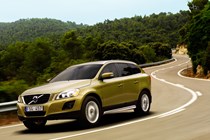
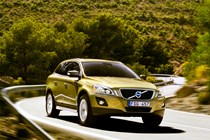
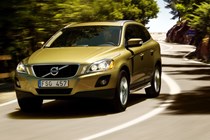
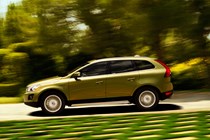
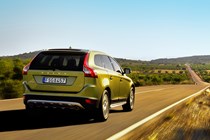
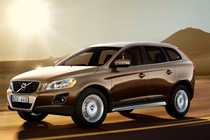


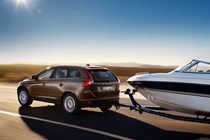
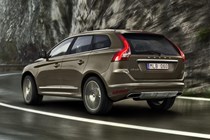

.jpg)
.jpg)
.jpg)
.jpg)
.jpg)
.jpg)
.jpg)
.jpg)
.jpg)
.jpg)
.jpg)
.jpg)
.jpg)
.jpg)
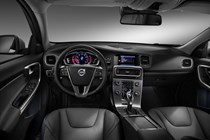
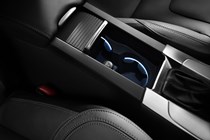
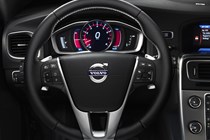
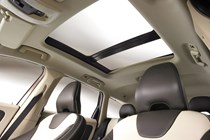
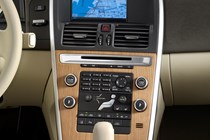

.jpg)

.jpg)
.jpg)
.jpg)
.jpg)
.jpg)
.jpg)
.jpg)
.jpg)
.jpg)
.jpg)
.jpg)
.jpg)
.jpg)
.jpg)
.jpg)
.jpg)
.jpg)
.jpg)
.jpg)
.jpg)
.jpg)
.jpg)
.jpg)
.jpg)
.jpg)
.jpg)
.jpg)
.jpg)
.jpg)
.jpg)
.jpg)
.jpg)
.jpg)
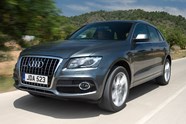
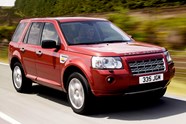



.jpg?quality=50)
.jpg?quality=50)
.jpg?quality=50)
.jpg?quality=50)
.jpg?quality=50)
.jpg?quality=50)
.jpg?quality=50)
.jpg?quality=50)
.jpg?quality=50)













.jpg?quality=50)
.jpg?quality=50)
.jpg?quality=50)
.jpg?quality=50)
.jpg?quality=50)
.jpg?quality=50)
.jpg?quality=50)
.jpg?quality=50)
.jpg?quality=50)
.jpg?quality=50)
.jpg?quality=50)
.jpg?quality=50)
.jpg?quality=50)
.jpg?quality=50)






.jpg?quality=50)

.jpg?quality=50)
.jpg?quality=50)
.jpg?quality=50)
.jpg?quality=50)
.jpg?quality=50)
.jpg?quality=50)
.jpg?quality=50)
.jpg?quality=50)
.jpg?quality=50)
.jpg?quality=50)
.jpg?quality=50)
.jpg?quality=50)
.jpg?quality=50)
.jpg?quality=50)
.jpg?quality=50)
.jpg?quality=50)
.jpg?quality=50)
.jpg?quality=50)
.jpg?quality=50)
.jpg?quality=50)
.jpg?quality=50)
.jpg?quality=50)
.jpg?quality=50)
.jpg?quality=50)
.jpg?quality=50)
.jpg?quality=50)
.jpg?quality=50)
.jpg?quality=50)
.jpg?quality=50)
.jpg?quality=50)
.jpg?quality=50)
.jpg?quality=50)
.jpg?quality=50)